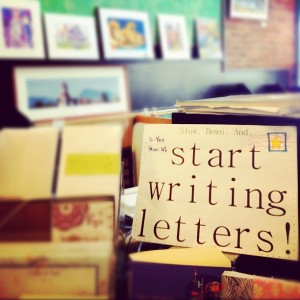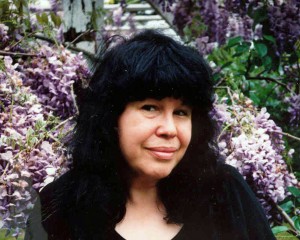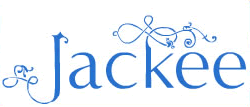Archive for January, 2013
Monday, January 28th, 2013
 On Saturday we held the first of the Writing With The Senses one-day retreats for writers. A lovely group of writers gathered in the calming space inside the Yurt on the grounds of Quiet View in Canterbury. Over the course of the day the writers plunged into a series of Writing With The Senses practices designed to crack open their writing.
On Saturday we held the first of the Writing With The Senses one-day retreats for writers. A lovely group of writers gathered in the calming space inside the Yurt on the grounds of Quiet View in Canterbury. Over the course of the day the writers plunged into a series of Writing With The Senses practices designed to crack open their writing.
Using the Writing With The Senses e-book as our guide the group of writers faced their fears, doubts and anxieties about writing as they received a mixture of coaching, writing insights and tips.
One thing all the writers present had in common was the presence of the inner critic. Smart and often cunning the inner critic takes shape in many disguises or characters, showing up in a myriad of ways writers hold themselves back. From feeling that their story was not worthwhile, that they had to write perfect pieces first time (a complete myth), from who do I think I am to want to write a deck of Oracle cards.
We laughed together as I suggested that each writer’s inner critic was simply in the wrong job. The inner critic’s original job the one, which they are well qualified for is at the stage of the writing process which requires editing, re-writing or polishing stages. But so many writers having experienced criticism way before they were ready for it at too early an age and often at the fragile and vulnerable points of experimentation meant many ended up with wounds carried over into adulthood.
This idea of the inner critic being wrongly assigned job duties resonated with the group and we laughed even more when I suggested that each writer could personally assign the inner critic a new post one where they would be fully occupied until their rightful services were called for.
I shared an example of my own re-assignment of my inner critic. I explained how she had recently been head hunted for a new post as Global Head of all out of order traffic lights around the world. Of course she was made an offer she couldn’t refuse and we parted company amicably. Last I heard she was rushed off her feet with all the demands from her new role that she apologized for having little time to check back in on me.
But I’m not complaining. Her absence has created a noticeable and remarkable shift since her new posting. I’m far less cautious. I put things out there even when I think they’re far from perfect and I’m loving the new waves of creativity and inspiration that’s sweeping across the entire body of my work.
So where will you re-assign your inner critic to? Don’t hesitate. Explain that his or her services are no longer needed right now but he or she will be called upon for short contracts that have clear time lines, boundaries and contracting that clearly define the role and requirements during the editing and revising stages of your work. Explain that her role and responsibilities will be fully explained and that she will be released from duties as soon as her job is complete.
The size of the group meant that writers received individual coaching and feedback and no one was overlooked. Each writer left with valuable feedback on their writing from their peers along with a plan of their next writing steps.
Feedback from Saturday’s workshops included:
- Small is beautiful
- I valued the sensitive, creative and insightful exercises, which were affirming
- Skilful leadership
- I felt I achieved the freedom and permission to feel comfortable to put pen to paper
- Felt very indulged by having a small and intimate group
- Very well presented
- A wonderfully easy day to be part of and a privilege
Our next workshop at Quiet View is on Saturday May 18th. This time of the year spring is fully awake from her winter slumber and is an ideal time to really be with the land and nature at Quiet View. It’s your opportunity to treat your writing self to a day of nourishment, indulging in the senses as a way of deepening your writing and cultivating your writing voice.
Our package includes a follow up coaching session and is a great special offer of £97.00 for the May 2013 workshop which includes a 30-minute follow up coaching call. Bring a friend and you both get the workshop and coaching for £150.00. Click here for more details
Once you’ve attended one of our Writing With The Senses workshops you’re free to attend one of our 2013 dates for free as our guest. Recommend a friend to Writing With The Senses and you’ll win a complementary 30-minute coaching call with me as a thank you gift.
No Comments
Monday, January 28th, 2013
 ” My interpretation is that intuition is the mountain inside us, it’s our certainty. It lets us go, it brings us back. It’s our flowing solidity. It can be called upon by keeping still, by coming back to our mountain place. Being solid inside ourselves. Intuition keeps us firm, grounded, earthed – just like a mountain.”
” My interpretation is that intuition is the mountain inside us, it’s our certainty. It lets us go, it brings us back. It’s our flowing solidity. It can be called upon by keeping still, by coming back to our mountain place. Being solid inside ourselves. Intuition keeps us firm, grounded, earthed – just like a mountain.”
- Atavar, M. (2009)
More wisdom from the wonderful Michael Atavar from his book, How To Be An Artist that could be retitled, How To Be A Coach. I like the way Atavar describes Intuition as a mountain.
Intuition is a skill that coaches will do well with developing and becoming more confident and skilful at being more intuitive in their coaching conversations. One way of viewing Intuition is that it is a high level of listening, hearing, sensing and responding to the less overt signs and signals communicated between two individuals in a coaching conversation. Intuition as a skill won’t always have the evidence to back up what you are thinking or feeling.
Intuition reads into and connects with energy, the sort of body signals and messages that are not easily transported into the traditional coaching models of Coaching like GROW and OSKAR.
Intuition builds on a coach’s ability to work in the field of not knowing, knowing that by remaining open you’ll be more receptive to new and often different levels of information and data beyond the data accessed from the rational, logical mind.
Last week I worked with client who in the process of our conversation said one word in amongst her comments and conversations that caused a reaction in my body. Rather than dwell on the reasons for this I simply wrote the word down and continued listening. Twenty minutes later it became clear why that particular word resonated in my body the way it did.
I didn’t need to jump at this point and make an observation or ask a question to let the coachee know about the intuitive response that I’d felt and connected with. It was far more valuable for her to make those connections for herself, to be guided by her own inner-tuition and for the recognition of the congruence that manifested for both of us to reveal itself in the session in the way that meant she took full ownership of her own connections and insights.
There is that danger that by being over zealous with our intuitive noticings and hunches we set ourselves up as the experts, the ones with the insights and knowledge and we rob our coachee’s of their own power and intuitive intelligence.
I am often asked by coaches who feel their intuitive intelligence is under developed how to become stronger in this area. I believe everyone is intuitive and some people simply need to tune into their intuition on a more conscious and aware level.
Try this: For one week pay special attention and focus to your own intuitive thoughts and hunches. This means paying attention to imagery, sounds, sensations, feelings and thoughts that may be wrapped up in subtle signals. You might choose to act on them or you might not.
At the end of your week review your list of intuitive thoughts and hunches and total up how many of your intuitive thoughts or hunches on your list turned out to be correct. This is the easiest and simplest way of deciphering how well your intuition works.
- For one week practice making more intuitive decisions and choices.
- Choose your daily outfit for one week intuitively.
- Choose your daily meals for one week based on intuitive choices.
- For one week call friends and family as soon as you receive an intuitive nudge.
- Create a quiet space or quiet mind to make your choices.
Doing more of this noticing will also help you with working out how your intuition signals or speaks to you.
- Does it respond by generating sensations or reactions in your body?
- Does it speak to you through internal chatter or a whisper?
- Does your body temperature rise or fall?
Getting to know your own body’s intuitive way of getting your attention will help grow your confidence and competence in this area.
Your intuition is often a symptom of your own ingrained wisdom and knowledge that you are willing to unleash. Intuition works well and is receptive when you’re relaxed and in a calm state.
No Comments
Monday, January 28th, 2013
 This was the feast that greeted me this morning as I looked out of my office window. A morning after Full Moon was still resident in the early morning sky.
This was the feast that greeted me this morning as I looked out of my office window. A morning after Full Moon was still resident in the early morning sky.
The Moon was a treat for my eyes. Seeing her was a much welcome start to my day. I wanted to share the image with you. Did you catch her presence last night when she was full in the sky or did you manage to say goodbye to her this morning?
- What are your memories or associations with a Full Moon?
- We’d love to hear?

No Comments
Sunday, January 20th, 2013
 Photo credit: Jackee Holder 2012
Photo credit: Jackee Holder 2012
“Solitary trees if they grow at all, grow strong.”
- Sir Winston Churchill
I captured this photo of a solitary tree that caught my attention along the banks of a train station in a village just outside Oxford.
Its solitary nature spoke no words but was felt. It definitely was giving off some kind of an aura.
I had three minutes before the train arrived.
Thank God for the iphone camera. I felt I was given a gift capturing the tree with my phone camera seconds before the tree pulled into the station. I climbed onto the train smiling taking the tree with me.
I have thought about this tree often. I’ve taken out the photo and looked at it.
More and more I am noticing solitary trees as I go about my days.
Solitary trees take my breath away.
I am hungry for more time alone.
Time to think
Time to reflect
Time to create
Time to sleep
Time to rest
Time to wander aimlessly
My body and soul craves more solitary downtime and playtime
Solitary trees remind me of my own need for solitude.
I find admiring solitary trees centering and grounding. They stimulate memories of time alone, running across London at 5am in the morning claiming the back streets as my own. Watching the Moon in the early hours of the morning and feeding my spirit with my own company.
Look around you and take a moment to notice the trees in your neighbourhood that stand-alone. How does admiring a solitary tree make you feel? What message is the tree giving off? What does it remind you of?
“And even more I revere them when they stand alone. They are like lonely persons. Not like hermits, who have stolen away out of some weakness but like great solitary men like Beethoven and Nietzsche.”
- Hermann Hesse
No Comments
Saturday, January 19th, 2013
 Since Christmas I’ve been walking around with the book How To Be An Artist by Michael Atavar curled up in the bottom of my bag. It’s a gem of a book. Avatar has a light touch that goes deep. He’s a master teacher about creativity, which he delivers in big massive chunks of wisdom all the way through the book. The book is spacious, no cramped lines and chapters here. He’s perceptive, compassionate and on the ball.
Since Christmas I’ve been walking around with the book How To Be An Artist by Michael Atavar curled up in the bottom of my bag. It’s a gem of a book. Avatar has a light touch that goes deep. He’s a master teacher about creativity, which he delivers in big massive chunks of wisdom all the way through the book. The book is spacious, no cramped lines and chapters here. He’s perceptive, compassionate and on the ball.
Today I’m reading a chapter Go where the energy is and it got me thinking and my thoughts led me to start scribbling down some of those thoughts.
Many of us struggle with knowing that there are some people we like and get on with and the feeling is mutual and then there are people who don’t like us and we wonder why they don’t like us and we can sometimes expend wasted energy trying to get them, most often unsuccessfully to like or notice us.
Take for instance in my work as a coach trainer. There will be delegates who are naturally drawn to my less formal style of facilitating and others who will prefer the more directive and structured styles of some of my colleagues. Now, do I spend my time trying to win over the approval of those who prefer the latter style or do I stick with focusing my energy towards those who are enjoying the way in which I facilitate and deliver and recognize you can’t win them all?
In his chapter Go With The Energy Atavar suggests, “Go to people you feel comfortable with and who like you. Don’t go towards people who don’t like you. You sometimes believe that you can convert them. You can’t. Steer clear.” I couldn’t agree more.
He goes onto to share a personal example, which is worth sharing here as I suspect many of you will have had a similar experience.
“Once I was told by a colleague to put a well known curator on my mailing list. I didn’t really have a good feeling about this. My intuition was right – the first time I sent out an email shot advertising a recent exhibition, she asked to be unsubscribed. I immediately took her off the list.” (Atavar, 2009)
The curator was clearly not a natural member of Atavar’s tribe. As soon as I was halfway through reading How To Be An Artist I couldn’t wait and went on line to order more of what he has written. I was what I call one of Atavar’s best clients. I was naturally attracted and engaged with what Atavar has on offer and needed little persuasion or encouragement to connect in.
I first came across the word “tribes” in relation to online audiences and communities through the work of Seth Godin. Godin in a book of the same name describes, “ a tribe is a group of people connected to one another, connected to a leader, and connected to an idea. . . . .People want connection and growth and something new.” (Godin, 2008)
Where in the past tribes needed to be local now they can be global making it even more feasible to go where the energy is. Why focus on the one curator who doesn’t get you when there are probably a thousand curators worldwide containing ten or even five who maybe the one’s who do just get you?
And neither is this all about a number’s game. The other day I took a quick look at the number of people following me on my Twitter account. It was I thought a reasonable figure of 400 people until I checked in with a couple of my peers Twitter accounts and realized they had in the region of a thousand plus followers. Suddenly my 400 followers felt like peanuts. I had to quickly reel myself back in reminding myself that it’s quality not quantity.
However the episode reminded me of just how easy it is to fall into the trap of being seduced into the numbers game. The irony is your tribe doesn’t need to be huge to be effective. Whether a thousand followers or 40 followers consider the kinds of relationships you have with your tribe. That’s what really counts. It’s better to expend your energy calling in those who feel connected to what you offer than scattering your energies far and wide with little meaning.
Take on board the words of Atavar, “Stay in your own good space and be yourself.” (Atavar, 2009)
Answer the questions below to deepen your connection with your tribe and bring your tribe closer to home:
- Who are your ‘best’ clients?
- What kinds of people are you drawn to work with?
- What kinds of people are drawn to work with you?
- Assess whom you’ve worked with over the last year. What’s the emerging theme or brand from your work with your coaching clients?
- Develop a profile of your most successful clients: age, gender, profession, circumstances, income and life style.
- Think about what your ‘best’ client needs are? How do you meet these needs?
- What services or products can you offer your best client? These are products that energize you and your clients and have a sense of ease and effortless around their creation.
- What free products can you create to attract your best clients to your tribe today?
- What else?
To attract your tribe spend more time thinking about the people who want what you offer and less energy and effort on those who don’t.
No Comments
Saturday, January 19th, 2013
 Photo Credit Tammy Strobel
Photo Credit Tammy Strobel
There’s something deeply ritualistic and at the same time comforting about writing a letter. Over christmas despite the ridiculous price of first class postage stamps I sat down one morning and hand wrote personalised messages in over sixty christmas cards.
Very quickly I found myself transported through time as memories of each person flickered across my mind during the minutes spent writing their names and a short message. The feelings and emotions that engulfed me felt warm, cozy and comforting. Suddenly I felt connected to each person. A permanent smile set up home on my face during the full duration for the time that I sat writing.
Perhaps I’d experienced a rise in endorphins the feel good emotions stimulated by the very act of sealing each envelope as if a part of me was being preciously wrapped inside, waiting to pop out once the envelope was opened. I experienced another surge of energy accompanied by a huge sense of accomplishment when I posted my wad of letters in the red pillar-box outside the local post office. Even planting the stamp ritualistically on the right hand corner of each envelope felt grounding, affirming and a sense of completion.
Somehow no matter how personal the contents of an email writing it and sending it virally personally doesn’t stimulate the same kinesesthic and visceral feelings generated from the act of sitting down and writing a letter or card by hand. This year I’m on a campaign to reinvigorate the art of letter writing.
Shortly after that experience of my Christmas card writing expedition I attended a Christmas artist market close by to where I lived. It was housed over three floors of a pub and was full of independent artists and crafts people selling their Christmas wares.
Arriving on the top floor my eyes were immediately drawn over to a group of people who appeared to be writing. Always inquisitive and just that little bit nosey I moved in closer to inspect what was going on. Much to my delight I discovered Claire the founder of this writing café Letter Lounge sitting at a table fully stocked with writing paper, pen, envelope and most important stamps. All I had to do was sit down at the table and write someone a letter.
I didn’t need any persuasion. I‘d already pulled up a chair unlike my sister who touched the paper and pens quizzically whilst saying out loud, “I don’t get this.” I could see how logic was not giving her a quick hit on what she would get from engaging in a letter writing experience.
Letter writing is a slow fix that crawls through the body as the letter unfolds. She would only discover the joys of letter writing from the act of writing the letter itself. So many of our activities in these modern times are dependent on us being externally gratified even though short lived without having to personally expend much energy.
It’s the engagement of the body that I find fascinating in the process of letter writing. The heart connected to the arm, connected to the pen, connected to the nib, which connects to the pen that channels all of this into the words and sentences on the surface of the page intrigues me in a way that writing on a keyboard doesn’t. Letter writing involves a suspension of time and space and time travelling and an emergence into Freud’s the psychoanalyst’s concept of Free Association.
My sister soon settled down and for the next twenty minutes we were both immersed on the blank page as we wrote letters to my daughter who had recently moved to live in Dubai.
As I wrote I found myself starring off into space and then coming back to the page. Each line I wrote felt deliberate and handpicked. It was slow which felt good and time somehow stretched supporting my time travel between the past and the present as I retrieved memories that I wanted to capture on the page.
“ Such a sweet gift – a piece of handmade writing in an envelope that is not a bill, sitting in our friends path when she trudges home from a long day spent among wahoos and savages, a day our words will help repair.’ writes Garrison Kellor in her chapter for the book, We Are Still Married – How To Write A Letter (Keillor, 1989)
By the time my sister had finished writing her letter she too had a huge smile on her face. “I really enjoyed that, it made me think in a way I am not accustomed to. I’m going to get the children at school to write letters. I think they will end up feeling as good as I did.” She had caught the fever, the deep satisfaction had swept over her whole body and her face was awash with emotions.
My daughter was delighted when she received the letters out of the blue some weeks later. Claire had provided us with stamps on the spot so both letters could be on their way to Dubai where my daughter is temporarily living.
The letters were not only a big surprise but they brought a new type of conversation into her space. We had not seen her for three months but now with our letters in her possession the lack of our physical presence was replaced by the fact the she could now touch, hold and sense our words. Our letters made us feel that much closer to her and every time she thinks of them it brings a huge smile to her face.
- When was the last time you wrote someone a personal letter?
- When was the last time you received a personalized, hand written letter or card through the post?
Is the handwritten letter is in danger of becoming extinct? You could change that this weekend by finding yourself some paper or a card, a pen, envelope and stamps. Give yourself 30 minutes and sit and write anything that comes to mind to your chosen person to write to. If you make a mistake simply put a straight line through it and continue.
So who will you write your first letter to and post in a letterbox?
Check out Claire’s website www.letterlounge.co.uk and the www.thejoyofslowcommunication.com
Read part two of this blog next week for tips from a great article by Garrison Keillor on How To Write A Letter.
No Comments
Tuesday, January 15th, 2013
 Tomorrow I begin working with a new group of coaches who I will be training to become coaches or increase their effectiveness as coaches and mentors.
Tomorrow I begin working with a new group of coaches who I will be training to become coaches or increase their effectiveness as coaches and mentors.
In my world of coach training no two courses are ever the same. Weeks before the course begin ideas and themes are already pouring through my mind. If things aren’t good with me, if ‘m practicing what I preach as a reflective practitioner then I’ll capture these ideas securely in a notebook or index card ready for when I sit down and go over the course content and write new notes to support the programme. When things are bad which often they are, great ideas and connections don’t get captured or if captured disappear amongst the flurry of paper my work spurts out everyday.
But arriving on a programme for me as the trainer is a wonderful thing. In an instant it is a reminder of all the principles and values that underpin who I am and how I work as a coach in these modern times.
On my coach supervision training we were reminded often that who we are is how we coach. It is interesting to watch new coaches in a room and how they respond to the first day’s learning. There are those who come and immediately the more non-directive, solutions focused approach and style instantly resonates with their preferred way of thinking and working. Then there are those who lean more towards the logical and the rational who frown or look quizzical and try to get hold of some theory or model that will anchor them. Make them feel that they have a firm footing and know more about the ground they are standing on.
It’s a challenge for me to be willing to unlearn all that I know, the knowledge and books on coaching and mentoring that I’ve devoured and just sit or stand and give myself permission to be.
The challenge is to be really present and available to the group. To be really open and to hear beyond the noise of my own interpretations what they are thinking or feeling and wanting from this experience.
It’s a stretch to not try to impress them with my background the years or hard toil and experience that has brought me to this point. It is hard to let go and embrace that point of not knowing that in a coaching conversation can take us together with the person we are working with into unfamiliar territories, which often yield rich and fertile responses.
How can I allow all of this to seep out from behind the coaching mechanics of the GROW Model, open and closed questions, the differences between coaching, mentoring and counseling.
My answer is to trust, to be brave, to be creative and to relax. These are no better suggestions I would offer to a coach trainer. I am looking forward to diving in and seeing what treasures are to be reclaimed by the group over the course of our time together over the next four months.
By making the time to unravel my thoughts I am already in that space of taking quiet time to hear the sound of my own voice. I am following the trail of my own thoughts. I am sensing the seeds of my own creative and intuitive processes, which I will in turn transfer into our work together.
At some point in our time together on the first day the group will experience five minutes of silence together. We will relate this in the context of reflective practice and mindfulness and how this impacts on the coaching and mentoring relationships and conversations.
Each new programme I try out different ways of engaging with silence. On Wednesday I may well try this activity I came across from the writer Kathleen Norris whose work I have deeply enjoyed over the years. This activity was actually recorded in a book I was reading called, Like A Tree by Jean Shinoda-Bolen.
Here’s the excerpt of Norris experience sharing the activity with a group of children. I think it also holds value sharing it with a group of adults so I will give it a try.
“Norris told them that when she raised her hand they could make all the noise they wanted to, and when she lowered her hand they had to stop. The rules for silence were equally simple, when she raised her hand, they had to sit and make no noise at all. Then they were to write about both experiences.
What she found was that making noise resulted in very little originality, while making silence liberated the imagination in so many of the children… One boy came up with, “as slow and silent as a tree.”
Another wrote that, “Silence is a tree spreading its branches to the sun.”
By using their reflective journals the coaches can then write about their own experiences and relationship with silence.
How fast does their mind and thoughts race when in conversation?
Where and when do they make time for quiet or silence in their week?
How comfortable am I or aren’t I with silence?
One of the pre course reading articles on our coach training programmes is an article on, The Use Of Silence in Coaching by Andy Rankin. It always provokes a strong for and against reactions amongst a newly gathered group of coaches.
The article suggests ways in which coaches can and must cultivate more silence into our work as coaches to lessen the distractions of the busy mind and the pool of techniques we can sometimes consciously and unconsciously off load onto our clients. I suggested reading this article and working through Rankin’s questions. Click here for a copy of the article.
I agree with Rankin’s suggestions for cultivating silence:
With everyday conversations resist the urge to interrupt or tailgate (finishing a sentence for the other person) and allow it to pass – keep listening and notice what happens.
Forego the notion of being an expert, be a fellow human being holding a profound listening space
Cultivate a philosophy of “being interested” rather than “being interesting”
Study literature in this field
Take times of personal reflective quiet time to discover your own centeredness
Join a meditation class
With a colleague practice just being in each other’s silent company – paying full attention to the other person with no agenda other than just being together. Discuss the experience
Review your progress in a journal
Review with a colleague or supervisor
Rankin, I. (2008) The Use Of “Silence” in Coaching. The International Journal of Mentoring and Coaching
Reading about silence outside of coaching texts is also another suggestion. In the book, Write Yourself, writing practitioner Gillie Bolton has a number of writing prompts on silence. Here’s one of them:
‘Write about something silent; give it words (e.g. a little child’s expression when given her comfort cloth), a wilting flower.”
Bolton, G. (2011) Write Yourself: Creative Writing and Personal Development. London. Jessica Kingsley Publishers.
When we make time for quiet or silence we observe and sense more. We listen and discern from a different space inside ourselves. We see more than is visible. We hear beyond what is said. But we cannot develop this ability with others without deepening it as a practice with ourselves.
Today I will leave you to ruminate on this quote from the cultural anthropologist Angeles Arrien. “ Where in your life did you become uncomfortable with the sweet territory of silence?” Photo credit:skierscott

No Comments
Tuesday, January 15th, 2013
 As long as I can remember I’ve always had a drawer full of buttons somewhere. Right now down the hallway in a room where I keep my clothes and shoes if you open the top left hand drawer of an old pine chest of drawers you’ll find an elaborately decorated case full of buttons.
As long as I can remember I’ve always had a drawer full of buttons somewhere. Right now down the hallway in a room where I keep my clothes and shoes if you open the top left hand drawer of an old pine chest of drawers you’ll find an elaborately decorated case full of buttons.
It’s stuffed full of the odd button here and there that are remnants of garments I‘ve either loved, lost or grown out (much to my dismay) of over the years.
I always hold onto buttons in hope. In hope that one day I will find the zeal, even the finesse to sit down like my mother did and sew things back together.
Unfortunately I have never been able to ennoble those characteristics inside myself so the collection has simply grown over the years with little purpose and with no role other than to sit in the drawer, tightly locked away in its elephant decorated case.
That’s why I was delighted when I came across away of using buttons as writing prompts. I discovered the exercise in Gillie Bolton’s book, Write Yourself: Creative Writing and Personal Development.
Here’s an excerpt from a member of a therapeutic writing group introducing ways of using buttons as writing prompts in a writing group setting. This can of course be adapted for when writing on your own.
“ The buttons scattered buttons the table between us. Willing hands fanned, preventing them rolling away. Six poets used to critiquing our poems, we were now exploring first draft writing. The large button collection, many antique were from my grandmothers and other sources.
Previous to pouring this multicoloured cascade, we had all written for six minutes with no subject, and no thought of reading out. Each had scribbled furiously whatever was there, with no attention to grammar, punctuation or even sense: writing for the sake of writing, to spill the contents of the mind onto the page.
After examining the buttons, we then choose some for ourselves and each other with no explanation and little talk. There was a childish pleasure of giving and receiving gifts.
Tearing ourselves away from the gleaming colourful heal, we each write about our own pile, initially anything about the button experience, for about ten minutes. Then I suggested that some of the buttons might represent someone or something in each of our lives past or present. We had 20 to 30 minutes for this.”
Bolton, G. (2011) Write Yourself: Creative Writing and personal Development. London. Jessica Kingsley Publishers

No Comments
Friday, January 11th, 2013
 “Lost”
“Lost”
by David Wagoner
Stand still. The trees ahead and bushes beside you
Are not lost. Wherever you are is called Here,
And you must treat it as a powerful stranger,
Must ask permission to know it and be known.
The forest breathes. Listen. It answers,
I have made this place around you.
If you leave it, you may come back again, saying Here.
No two trees are the same to Raven.
No two branches are the same to Wren.
If what a tree or a bush does is lost on you,
You are surely lost. Stand still. The forest knows
Where you are. You must let it find you.
Savour this poem for a moment. Let the words seep into you and find where it takes you. Nature, trees it’s where many of us find ourselves again. Stand still. Stillness will speak if you let it. Be.
No Comments
Friday, January 11th, 2013
 Unlearning to Not Speak
Unlearning to Not Speak
By Marge Piercy
Blizzards of paper
in slow motion
sift through her.
In nightmares she suddenly recalls
a class she signed up for
but forgot to attend.
Now it is too late.
Now it is time for finals:
losers will be shot.
Phrases of men who lectured her
drift and rustle in piles:
Why don’t you speak up?
Why are you shouting?
You have the wrong answer,
wrong line, wrong face.
They tell her she is womb-man,
babymachine, mirror image, toy,
earth mother and penis-poor,
a dish of synthetic strawberry icecream
She grunts to a halt.
She must learn again to speak
starting with I
starting with We
starting as the infant does
with her own true hunger
and pleasure
and rage.
I caught the last seven lines of this poem last week whilst listening to a podcast and I had to track it down. Over the years in many books that I read Marge Piercy’s name pops up time and time again. Her poems always seem to touch a nerve, to put into words the unspeakable. I have an article – Scandal in the family of hers, which is years old that I photocopied from, I think it was one of her books entitled, So You Want To Write. In it she writes about her experience of writing about difficult subject matters in her family history and the impact it had.
It’s a great article because it leaves you recognizing that no matter what the truth needs to be told and that there will always be a cost of writing your version of that story to you and to others.
Years ago when I wrote my first book Soul Purpose, I played safe, didn’t fully enter into my own story and that kept me blocked and stifled for many years as a writer.
Writing sometimes requires enormous amounts of courage.
It requires bravery.
It needs you to inhabit your dis-comfort zone.
But how often do we avoid these spaces. Playing safe with our stories, our words and kidding ourselves that it no longer matters.
I really like what Marge suggests in her poem, ‘starting with I…..’
Here’s a writing activity to try out this weekend
Just write the word I on the left hand column of a blank page and then write down whatever comes to you next?
Write the word I again and see what comes and write it down?
Write the word I again and again and again repeating the exercises seven times.
When your pen pierces the page or stabs at the keyboard what is underneath the word I?
No Comments
 On Saturday we held the first of the Writing With The Senses one-day retreats for writers. A lovely group of writers gathered in the calming space inside the Yurt on the grounds of Quiet View in Canterbury. Over the course of the day the writers plunged into a series of Writing With The Senses practices designed to crack open their writing.
On Saturday we held the first of the Writing With The Senses one-day retreats for writers. A lovely group of writers gathered in the calming space inside the Yurt on the grounds of Quiet View in Canterbury. Over the course of the day the writers plunged into a series of Writing With The Senses practices designed to crack open their writing.














